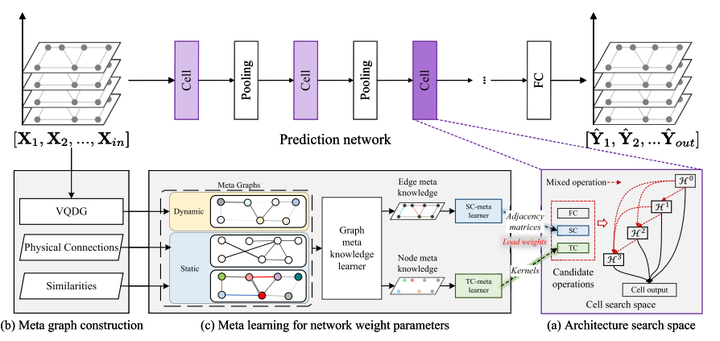AutoSTG+: An Automatic Framework to Discover the Optimal Network for Spatio-temporal Graph Prediction

Abstract
Spatio-temporal graphs (STGs) are important structures to describe urban sensory data, e.g., traffic speed and air quality. Predicting over spatio-temporal graphs enables many essential applications in intelligent cities, such as traffic management and environment analysis. Recently, many deep learning models have been proposed for spatio-temporal graph prediction and achieved significant results. However, manually designing neural networks requires rich domain knowledge and heavy expert efforts, making it impractical for real-world deployments. Therefore, we study automated neural architecture search for spatio-temporal graphs, which meets three challenges: 1) how to define search space for capturing complex spatio-temporal correlations; 2) how to jointly model the explicit and implicit relationships between nodes of an STG; and 3) how to learn network weight parameters related to meta graphs of STGs. To tackle these challenges, we propose a novel neural architecture search framework, entitled AutoSTG+, for automated spatio-temporal graph prediction. In our AutoSTG+, spatial graph convolution and temporal convolution operations are adopted in the search space of AutoSTG+ to capture complex spatio-temporal correlations. Besides, we propose to employ the meta-learning technique to learn the adjacency matrices of spatial graph convolution layers and kernels of temporal convolution layers from the meta knowledge of meta graphs. And specifically, such meta-knowledge is learned by graph meta-knowledge learners, which iteratively aggregate knowledge on the attributed graphs and the similarity graphs. Finally, extensive experiments have been conducted on multiple real-world datasets to demonstrate that AutoSTG+ can find effective network architectures and achieve up to about 20% relative improvements compared to human-designed networks.